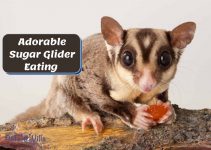My sister and I have had a hard time deciding whether we should get a flying squirrel vs sugar glider.
Like us, You may have fallen in love with both of these creatures. But now you do need to know how they differ from each other before making any final decision.
Let’s take a closer look at these two animals to see which one is the best fit for your family.
Table of Contents
Sugar Glider VS Flying Squirrel: What Are the Key Differences?
First off, people think they are related or of the same family. Newsflash, they’re not! Gliders are marsupials while flying squirrels are mammals.
You must have heard a sugar glider owner refer to them as their little marsupial. Some other people call them marsupial mammals (1).
Marsupial mammals give birth to immature young ones and have a pouch for the young to develop outside the womb. So the marsupial glider is both a mammal and a marsupial.
It is a native of Papua New Guinea, Tasmania, and Australia. No surprise at all to see Australia there! Natural selection was incredibly biased in letting many unique animals stay in Australia!
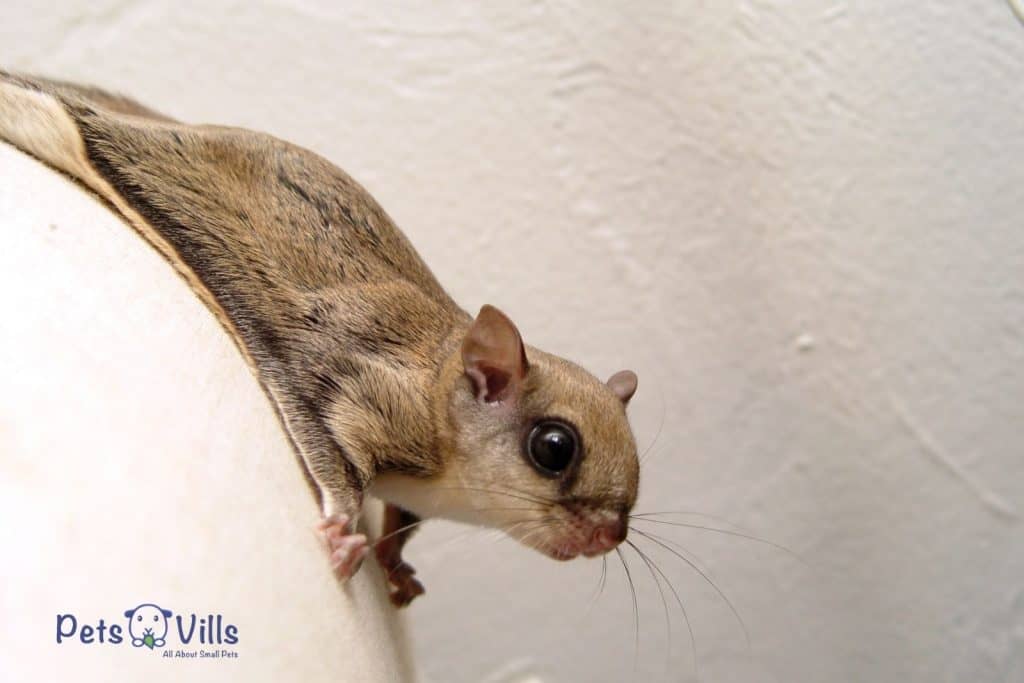
Flying squirrels are exclusively mammalian. They are natives of North America and Central America.
Having seen the primary differences between the two, let’s look at their differences in detail.
Appearance and Size
Anna Thanukos writing for the University of California evolutionary department, says the two are incredibly similar (2).
Both are furry little animals that closely resemble each other in size and their homologous structure, the patagium.
The patagium is a membraneous part of the two animals’ bodies that extends from their hindfoot and runs along the length of their bodies.
They use this homologous structure to glide from tree to tree, using their tail to brake and land.
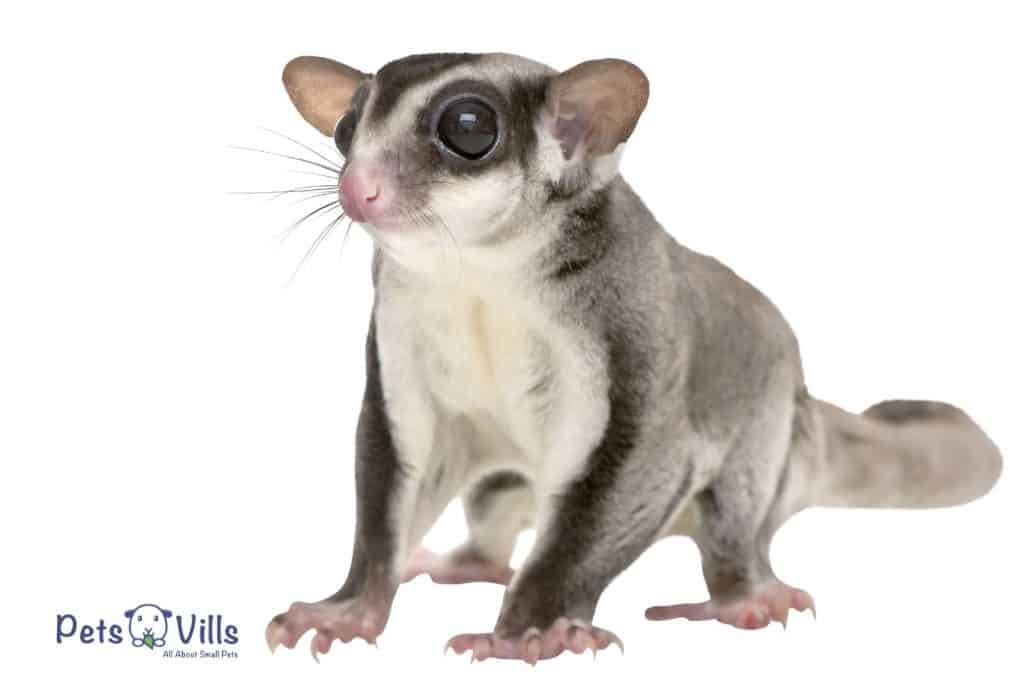
Flying Squirrels and Sugar Gliders both have a white belly and enormous eyes. That explains why most people think of them as being from the same evolutionary tree.
Yet still, they both glide from tree to tree, although the glide parameters vary. Both can glide for an average of 50-65 feet every day.
While the average squirrel will grow to a horizontal size of about 5-14 inches, a sugar glider can grow to a maximum length of 4-7 inches.
A flying squirrel also has an average weight of 2-5 ounces, while a critter is usually about 3-6 ounces. The relatively small size makes them the perfect pocket pet.
Housing
Both animals have their habitats in forests living in tree hollows. However, flying squirrels have a love for homes abandoned by other animals.
It’s common to find them living in abandoned bird nests or holes in deciduous trees.
Both animals rarely touch the ground. Therefore, it is rare to find them living in ground holes. Living on the ground would make them an easy target for their predators. Smart, isn’t it?
Female sugar gliders give birth to immature baby sugar gliders called joeys. Therefore, they have pouches that hold their young until they mature.
That’s also the norm for kangaroos. But flying squirrels are placental mammals and thus give birth to fully mature young ones.
Behavior and Sociability Differences
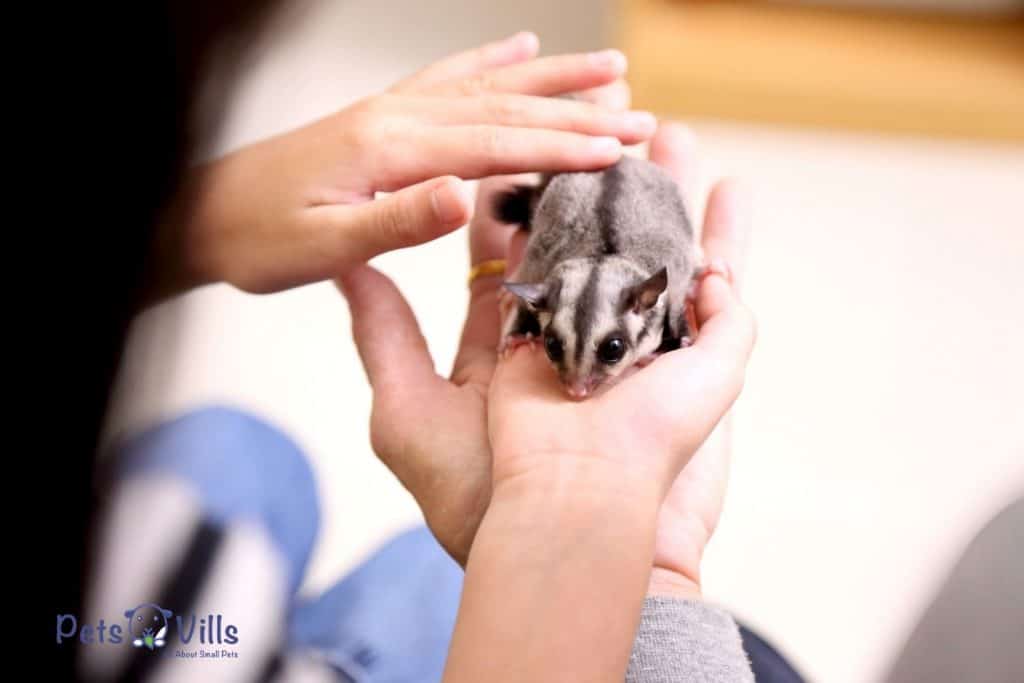
Both animals are nocturnal to escape predators. Critters are social animals. They live in large groups of at least twelve members in the wild.
In captivity, you can have them alone or as a pair. Flying squirrels live in groups of up to eight members.
Both are social animals, and if you plan to keep any of them, provide them with a mate.
Dr. Christina Haney, a licensed vet, says flying squirrels, when lonely, can get depressed and die of loneliness.
Like gliders, they also require the constant presence of their owner. Continuous presence and lots of attention will enable them to bond promptly with new owners.
Unlike flying squirrels, sugar gliders have scent glands to mark their territories with their saliva. This unique smell also helps them to identify members of their colony. Flying squirrels have no such behavior.
Both animals are, however, great escape artists. In the video below, the Nat Geo Wild narrator equates the gliding membrane of the flying squirrel to a built-in life insurance policy.
Of course, the same applies to sugar gliders. The gliding membrane sees them escape predators more often than not.
Food and Nutrition
Flying Squirrels have a diverse diet that largely depends on their habitat. As this Nat Geo article explains, Northern flying squirrels typically eat insects, fungi, nuts, and seeds because of where they live.
On the other hand, Southern flying squirrels eat eggs and even carrion. Indochinese flying squirrels have a propensity for cultivated fruits.
Flying squirrels don’t have the notorious sweet tooth that gives the sugar gliders their name. Gliders can eat fruits, vegetables, insects, pollen, and the nectar of tree sap.
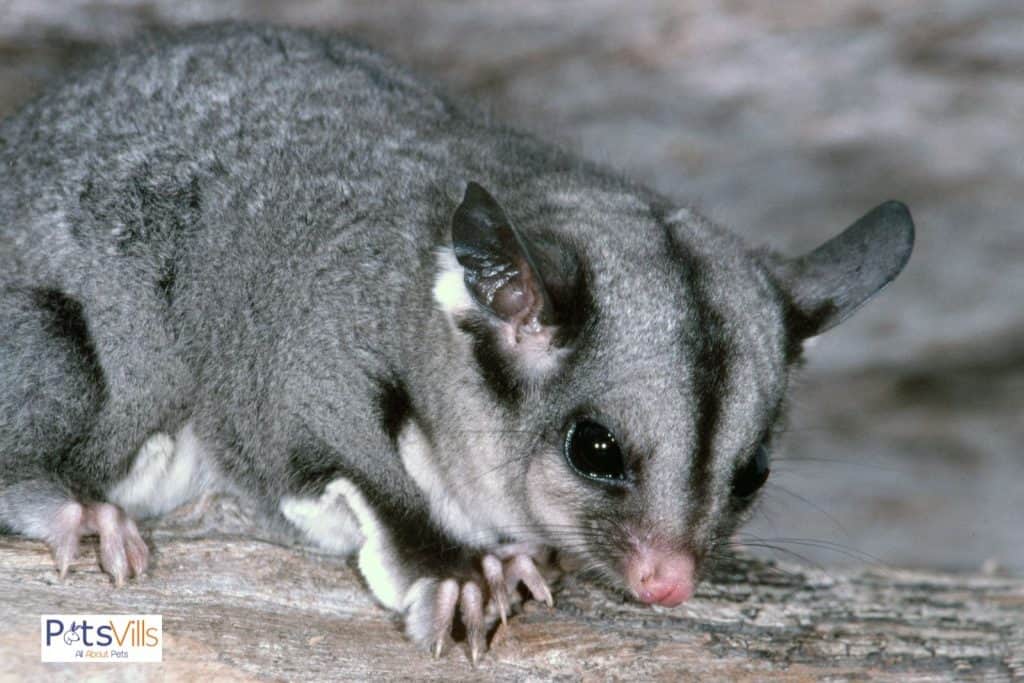
Wild gliders have a more varied diet compared to their counterparts in captivity. Dr. Robert Ness, a leading veterinary expert, says, “gliders are primarily insectivores.” They can live on insects and nectar in the wild.
READ MORE: Good Names for Sugar Gliders
Health Conditions and Lifespan
Dr. Rosemary J Booth, a veterinary doctor, says that most health conditions in sugar gliders will often be a consequence of dietary imbalances. That’s besides parasitic, fungal, and bacterial infections.
John Sims writing for Critter Guard says squirrels can be susceptible to various diseases, notably leptospirosis and lime disease. The lifespan of both the gliders and flying squirrels will improve in captivity.
Information from the Wildlife Images Rehabilitation and Education Center says gliders have a lifespan of four to five years in the wild and 12 to 15 years in captivity.
Nat Geo (3) says flying squirrels have an average lifespan of five years, although that can improve to 10 years in captivity.
Can Flying Squirrels and Sugar Gliders Live Together?
Sugar gliders can’t live together with flying squirrels. Not even a leucistic glider can. They are not of the same family and will fight a lot when put together.
A Squirrel vs sugar glider fight will harm both of them. You can have both in the same home but never in the same cage.
In rare cases, flying squirrels and sugar gliders might get along. But then that depends on the type of sugar glider and squirrel. The odd couple in this video would get along at times, but fights were also frequent.
Eventually, they had to be separated for their safety.
Flying Squirrel or Sugar Glider: Which One Should I Choose?
Flying squirrels and critters might have similarities, but you need to consider a few things.
Space
Both pets are pretty small and will require the same amount of space. A 2f by 2 ft floor space with a height of five or six feet should be enough for either pet. But you’ll need to build climbing structures for them.

The spacing needs to resemble their natural habitats closely. So, you’ll need to add climbing structures. Such structures will allow the animals to glide as they do in the wild. They are both quite playful and get easily bored.
Health Care
According to leading exotic pet specialist Dr. Robert Ness, gliders are high-maintenance pets. They need the ultimate dedication to live comfortably in captivity.
So, you’ll need to have a glider-savvy vet nearby. Flying squirrels aren’t any different, though. They, too, will require regular health checks with an exotic pet veterinary doctor.
Cost
The two animals have varied dietary needs that could turn your life upside down because of their specificity. They aren’t your usual pets that can eat almost everything human eats. They, therefore, are high-cost pets.
Life Span
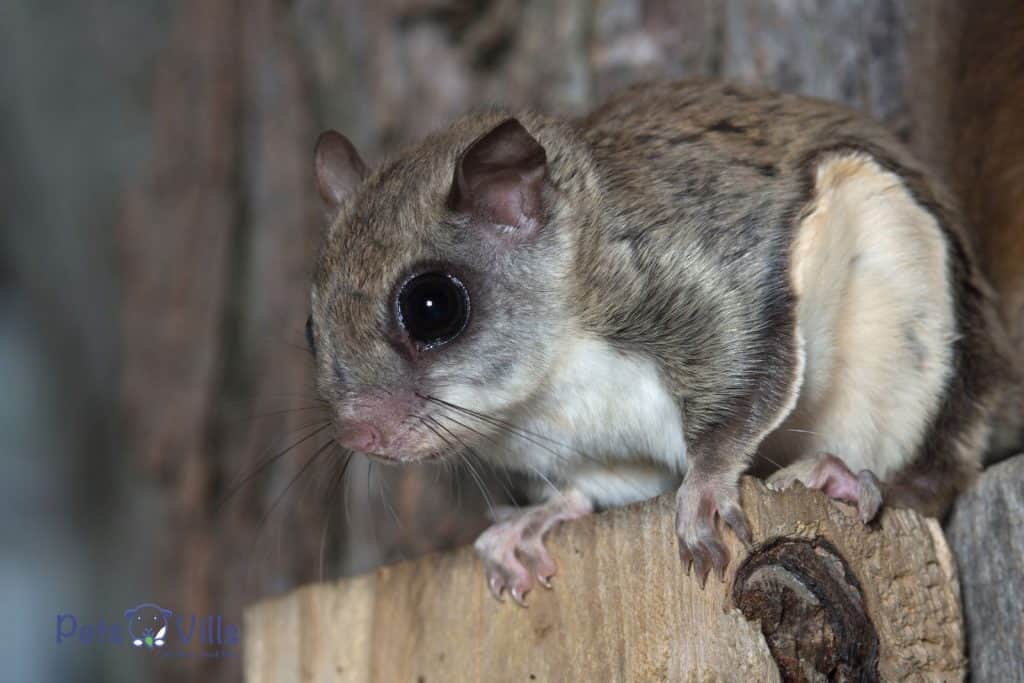
You can count on them being lifelong pets once you bond with them.
Both will cost you nearly the same amount to buy and maintain. You thus need to do your search thoroughly to ensure you choose the right pet.
Since people’s needs and interests vary, there is no good or bad pet. It’s the same way some people think dogs are the best and others prefer cats (I do!). So, you can choose either of the two, and they’ll turn out fine.
Frequently Asked Questions
Are sugar gliders or flying squirrels expensive?
Yes, they are. Prices for sugar gliders vary with the breeder you are buying them from. You will spend more on adult sugar gliders since they are harder to train. Younger flying squirrels are also more expensive for the same reason.
Why do sugar gliders and flying squirrels look similar?
The marsupial gliders and the placental mammals look similar thanks to the analogous feature, the patagium.
Are sugar gliders bigger than flying squirrels?
No. Sugar gliders aren’t bigger than flying squirrels, although they weigh more.
Conclusion
Do you still think sugar gliders and flying squirrels are the same? I bet not. Pitting the flying squirrel vs sugar glider springs several interesting differences and similarities.
As pets or in appearance, the two animals have a few similarities. But you should know that they aren’t of the same family and will thus differ.
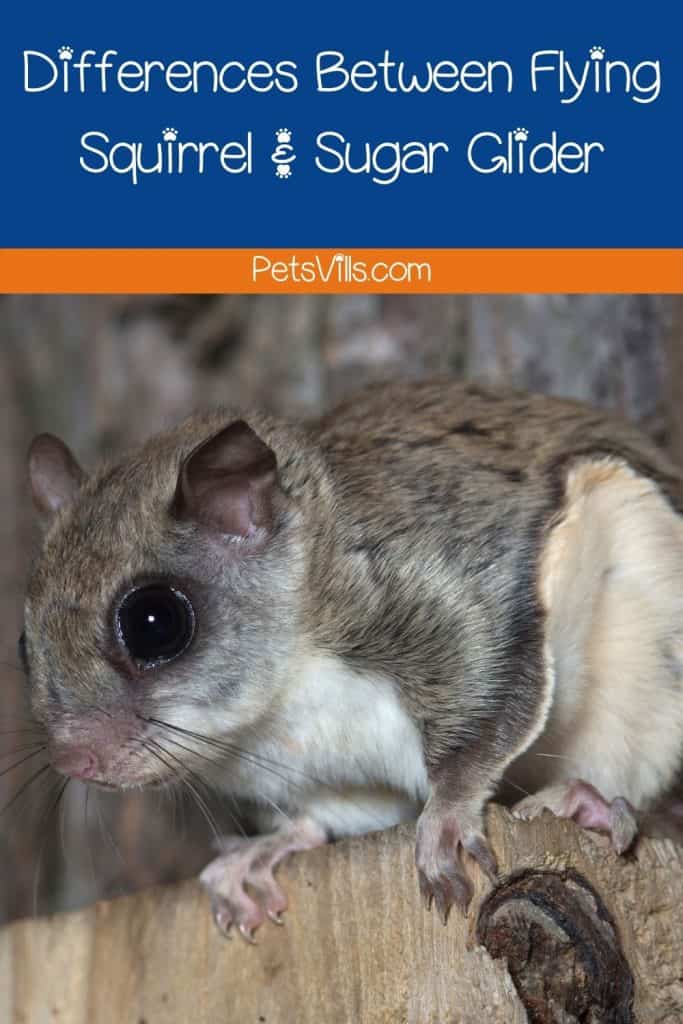
Flying squirrel vs sugar glider; which one do you prefer? Let us know below!
Resources
- 1. Sugar Glider – an overview | ScienceDirect Topics [Internet]. www.sciencedirect.com. [cited 2022 Apr 25]. Available from: https://www.sciencedirect.com/topics/agricultural-and-biological-sciences/sugar-glider#:~:text=Natural%20History
- 2. Test your understanding – Understanding Evolution [Internet]. 2021. Available from: https://evolution.berkeley.edu/similarities-and-differences-understanding-homology-and-analogy-ms/test-your-understanding/
- 3. Flying squirrels, facts and photos [Internet]. Animals. 2020. Available from: https://www.nationalgeographic.com/animals/mammals/facts/flying-squirrels
Alina Hartley is a small-town girl with a ginormous love of bearded dragons. It all started with Winchester, a baby bearded who was abandoned at the shelter by his former owners because of a birth defect that caused one front leg to be shorter than the other. Alina originally went to the shelter looking for a guinea pig, but one look at Winchester and it was love at first sight. From that day on, Alina has dedicated her life to learning everything she can about bearded dragons. She loves helping new beardie parents start their incredible journey with these magnificent reptiles.
Follow her on:
LINKEDIN
TWITTER.
Read her latest articles HERE
Learn more about her HERE.

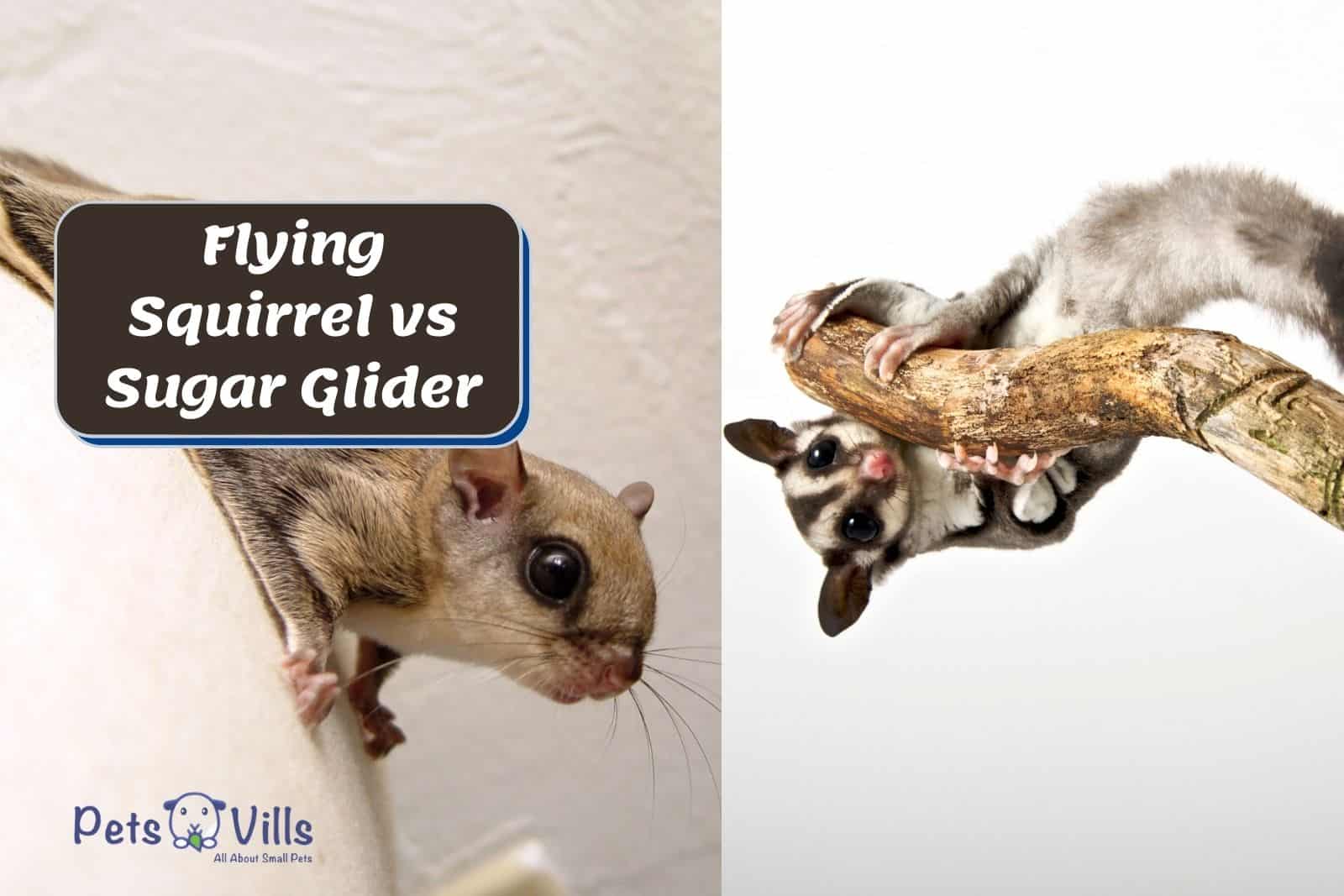
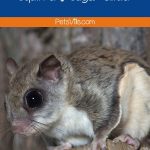

![Cute Sugar Glider Drinking From The Bottle [Must-Watch Video]](https://petsvills.com/wp-content/uploads/2022/09/Cute-Sugar-Glider-Drinking-From-The-Bottle-Must-Watch-Video-211x150.jpg)
